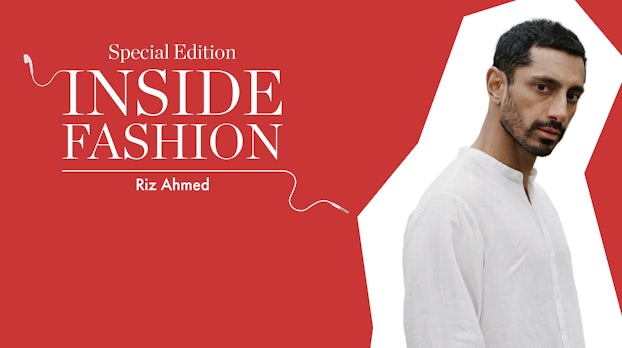Defining Radical Transparency

Thinking about the Importance of ‘(Radical) Transparency’ in the Fashion World Post COVID-19, MA Fashion Media Practice student, Zoë Goetzmann investigates.
Earth Week stimulates a lot of discussion around sustainable fashion. So, it’s with this in mind that I decided to take this opportunity to reflect on a concept that has been on my mind throughout this past year: (radical) transparency.
‘Radical Transparency’ is an industry buzzword first addressed in The State of Fashion 2019, a report compiled by the Business of Fashion (BoF) and McKinsey & Co. This term has since found new relevancy in the midst of COVID-19 as fashion brands, companies and consumers adapt to the “new normal”, tackling the ideas of overconsumption and sustainability by addressing the needs of the ‘conscious consumer’ during this period of extreme anxiety and uncertainty.
Related posts:
Defining Radical Transparency in the Fashion (and Beauty) World(s)
According to the Fashion Transparency Index: 2020 Edition, an online assembly of 250 brands and retailers published by Fashion Revolution, ‘transparency’ is defined as “the public discourse of credible, comprehensive and comparable data and information about fashion’s supply chains, business practices and the impacts of these practices on workers, communities and the environment.” The term ‘radicalism’ denotes a need for social and political reform.
In the fashion world, such examples of ‘(radical) transparency’ can be found via social media platforms such as Diet Prada and Estée Laundry, highlighting instances of ‘copycat culture’ and ‘cultural appropriation’ in the fashion and beauty worlds via satirical posts and memes. Brands such as Arket, Everlane, Reformation and The RealReal use ‘visual’ supplier lists, annual reports as well as algorithms such as the ‘RefScale’ (used to calculate the amount of carbon and water used in clothing) to convey its transparent practices to its consumers.

Luxury brands from the likes of Stella McCartney and Mulberry follow suit, one emphasising the importance of a more ‘circular economy’ and material innovation – the other choosing to showcase the production process of its leather goods via an immersive pop-up experience during this past London Fashion Week. In lieu of a collection this season, designer Osman Yousefzada’s film, ‘Her Dreams Are Bigger’ presented in collaboration with Eco-Age and The White Chapel Gallery challenged the notions of sustainability, fast fashion and global beauty through a behind-the-scenes look at the lives of Bangladeshi female workers.
Why it Matters
“If we don’t know where our clothes are being made, then it is difficult for relevant stockholders to work together to fix problems,” reports the Fashion Transparency Index: 2020 Edition, citing the Rana Plaza collapse in 2013, an incident which cost the lives of thousands of Bangladeshi workers, as the impetus for the fashion industry to become more transparent, amending its ‘fragmented’ supply chains in an effort to disclose how the clothing is actually made.
https://www.instagram.com/p/B_WuyqAJsrk/?utm_source=ig_web_copy_link
Transparency is all about being held accountable and responsible for one’s industry practices, providing ‘a window’, as the source above describes, for fashion brands and companies to find new ways to address these issues ‘quickly and collaboratively’.
“No company will get through the pandemic alone,” reports The State of Fashion 2020: Coronavirus Update, “Fashion players need to share data, strategies, and insights on how to navigate the storm.” Now more than ever, brands and companies have to become a bit more “decisive”, as the report explains, reassessing their initial “values” and “actions” whilst listening to the needs of their consumers.
Psychology of Fashion
“People generally buy far more than they need,” explains Dr. Carolyn Mair, author of The Psychology of Fashion (The Psychology of Everything) in an interview published in June 2019 by the American Psychological Association, “research suggests that 80% of clothes in our wardrobe are unworn and that’s quite worrying actually,” she explains. “Buying too much is something that we really should avoid.” Understanding the psychology behind fashion (i.e. the reasons behind what we wear) has become increasingly important for both retailers and consumers during a time when people are, as Dr. Carolyn Mair notes again, ‘buying less’ in this period of obvious financial uncertainty.

Conscious Fashion and the Conscious Consumer: You Are What You Wear!
“You are what you wear,” says actor-activist-rapper Riz Ahmed in a recent Business of Fashion (BoF) Podcast episode, a proponent of “conscious,” he explains, rather than sustainable fashion (a problematic term, in his opinion), Ahmed urges brands to produce “less,” as he continues, suggesting that luxury designers create “fewer collections” in order to make clothing “a little bit more special.”
To which, BoF’s Founder and CEO Imran Amed responds, “I think it’s up to us [the consumers] to lead the charge,” highlighting his distrust of companies to take on this sole responsibility, underlining the need for additional government legislation. He points to recent French law, heralded by ecology minister Brune Poirson which has since banned the incineration of unsold consumer and fashion products as of last year.
Perhaps the only good thing about this pandemic is that it has incited thought-provoking, meaningful and creative discussions through a variety of different outlets. During this current lockdown situation, key social media platforms such as Instagram as well as even Instagram Live have been hugely beneficial for this specific type of cross-collaboration, pointing to British GQ’s Style and Grooming Director Teo van den Broeke’s Instagram Live (IGTV) program, ‘My Isolation Essentials’ as a prime example.
We only have one planet – so let’s all make a concrete vow and/or a promise (similar to how we should approach our clothing selections) to sustain its overall life span for as long as possible.
By Zoe Goetzmann
Tik Tok – Dance Phenomena or Pioneering Broadcaster?
Life Under Lockdown: Staying Productive (Active and ‘Sane!’) Under Quarantine

